Culture shock in India is real. Most travellers to India – whether it’s your first or tenth time here – have moments of overwhelm. How you react to the culture shock can make or break your trip, so I’ve laid out some of my favourite ways to deal with culture shock in India & tips for India travellers.
“This is indeed India! The land of dreams and romance, of fabulous wealth and fabulous poverty, of splendour and rags, of palaces and hovels, of genii and giants and Aladdin lamps, of tigers, and elephants and peacocks… a hundred nations and hundred tongues, of a thousand religions and two million gods, cradle of the human race…“
– Mark Twain
Dealing with Culture Shock in India
They’d clearly been sleeping in the railway station. A group of five or so girls, dressed in ripped and grubby clothes couldn’t have been more than 7 years old.
They hung around our group as we we waited for our train at Agra. Disarmingly pleading almond eyes looked up at us. Gently tugging at our sleeves. Please. We’re hungry.
Feeling like awful humans in our indecision what to do, eventually our tour guide went off and bought five milk packets to give to them. They gulped it thirstily. Around one minute followed, before no less than 20-30 kids appeared at our side. All wanting the same. The respite only came after another 20 minutes when a train pulled in, and the children decided their odds were higher elsewhere.
Then there was the time in Delhi when I saw a man with a bleeding head trying to cross the road, clearly just having been involved in an accident. No-one was helping him. No-one even seemed to notice. Or the time when street dogs with chunks missing from their sides followed us pleadingly back to our hotel in Orchha.
I’m not sharing these stories to put you off travel to India, but to encourage a realistic discussion around some of the situations that travellers to India can find themselves in – and how to handle it.
Talking about some of the harder aspects of travel in India is difficult: I don’t want to offend my Indian friends & family by focusing on some of the harsher realities of life in India – as there’s so much good happening in India too, but I know that I faced all of these issues that I describe here below during my trips to India, and want to help other travellers to be prepared.
We think India is one of the most rewarding destinations in the world to travel to, and especially once you know a bit more about how to handle its differences!
Here are some of the common instances of culture shock you might come across, and how we suggest coping with them.
ⓘ TIP: Planning a trip to India? Join our free India Travel Facebook group here!
General Advice for Dealing with Culture Shock in India
We’ll dig in more details below, but in general there are a few things that help ease your “landing” in India, particularly if it’s your first visit:
- You don’t have to travel India alone. If you’re feeling unsure, take a tour or use a travel planning company that can provide a guide. You can check out our favourite India tours for 2020 here, or browse India tours on Tour Radar here.
- Generally Northern India (especially Delhi, Rajasthan, Uttar Pradesh which includes Agra and Varanasi) sees more hassle and more extremes than southern India, which is a bit quieter. We recommend that travellers with time on their side start in the south and work their way up!
- It’s worth spending on nicer hotels if you can. Generally travel in India is cheap by western standards (except Mumbai perhaps) and you won’t regret having somewhere nice and quiet to retreat to for a nice chai at the end of a busy day exploring.
- ALWAYS have a local Indian sim card / phone with a data plan that you can use in case you need it. Pick one up on your arrival at Delhi airport (Airtel have a booth inside the terminal).
- Pace yourself – allow time to adjust to the new time-zone, surroundings and country. We recommend allowing a few days to relax in your schedule rather than trying to see a new place every day.
- Don’t even think about going to India without good travel insurance. Get a quote with World Nomads here.
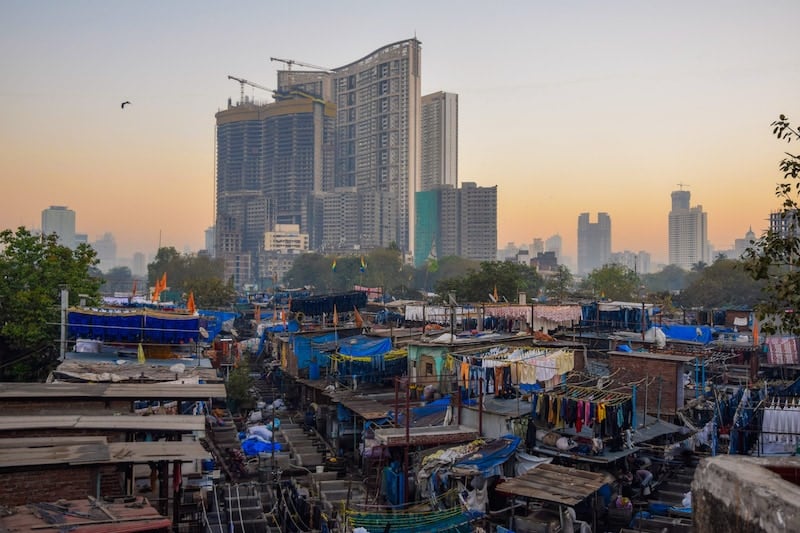
Everyone Has a Story in India
I can’t remember who said this to me, but it’s pretty spot on. During your travels around India you’ll likely be regaled with endless tales… about all manner of things. After all, storytelling is important and a part of the rich culture in India! Just digest the stories with a pinch of salt – If a story sounds a bit too much like a tall tale? It probably is.
Action Required? Just don’t take everything you are told as gospel.
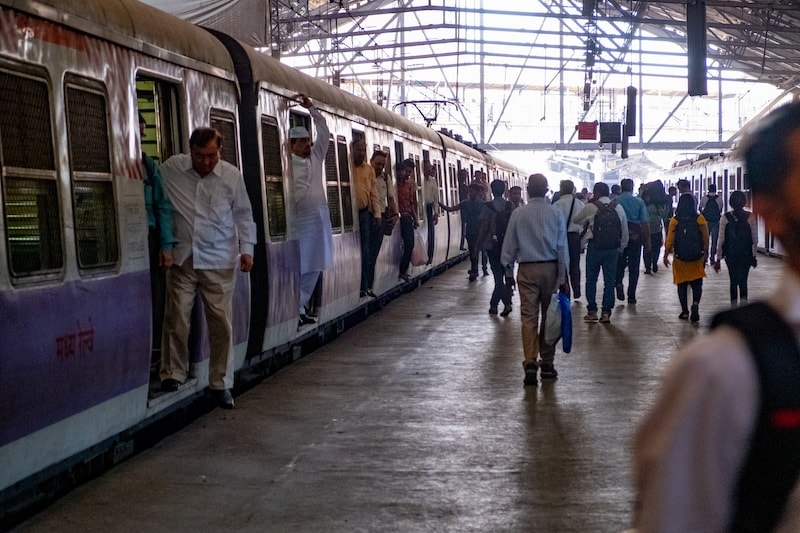
People, People Everywhere
For a country with over 1.2 billion people living there (and that’s just the official number) it’s not surprising that things get a little crowded from time to time.
In India, the concept of personal space is non-existent. Fortunately, most Indians are warm, friendly and welcoming, but it does mean you’ll need to push your way through people & queues. At all times of day there are people in the street and all around, some of whom may stare at you (staring is not considered rude in India).
How to deal with the crowds:
- Avoid travelling on public transport during rush hour in cities. Especially the Mumbai local trains. You don’t want to know what “super crush load” is. Trust us.
- If you’re crowded by taxi drivers / touts at train stations / bus stations etc, step away from the crowd and find some space away to the side for yourself to get your bearings
- Use your elbows and join in the fun. You won’t get anywhere waiting politely in line – just join in and shout at anyone who tries to cut in ahead 🙂
- If you feel tired of people, take a few hours to retreat to the quietness of your hotel room, read a book in a cafe or generally take some time out (essential for introverts).
- Don’t travel in “General” class on trains. Ever.
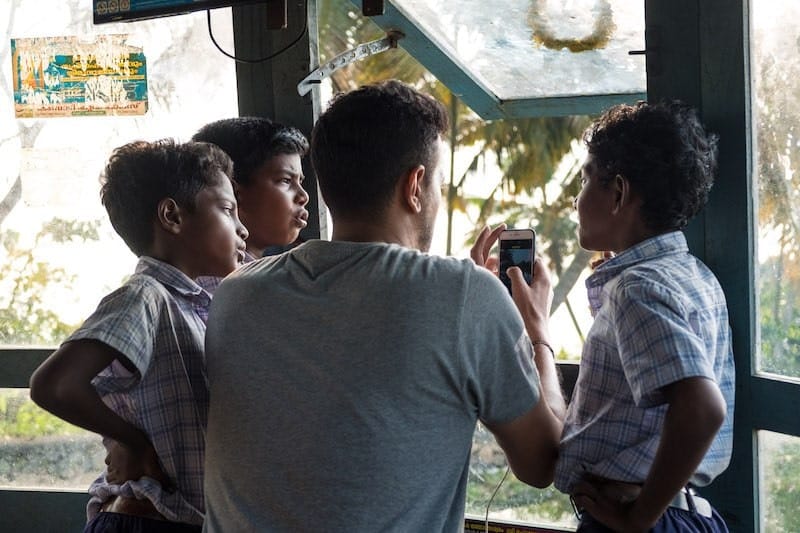
The Poverty
Poverty in India is well publicised (many would say over-publicised by western media) and you can’t escape it on any trip to India. An estimated 11 million children in India live on the streets. But know that there’s also a lot of wealth in India, as well as a very rapidly growing middle class.
The poverty that you’ll see on some of India’s city streets is truly heartbreaking, and as a visitor it can be very hard to know what to do. The reality is a little more complicated, however, as many of those asking for money are part of begging gangs and a part of larger abuses & racketeering (see our tips on what to do below).
Each year, thousands of children leave their homes in the country to escape to the cities to make their fortunes. Unfortunately they get recruited by begging rings, get sold into prostitution and the like. There are several charities working to try to help children in these situations.
Things to be Aware of with Poverty in India / What to Do
- We don’t recommend giving money / sweets / pens / food to begging children. Many beggars are part of begging rings, are addicted to sniffing glue, or are part of gangs. If you do give food, watch until the child consumes it (otherwise often things are returned to shops where shop owners will give the child cash which they will then use to buy glue). Giving encourages them not to be in school and helps perpetuate a cycle of reliance on tourists.
- Support Charities that are helping the homeless in India, such as Railway Children, Salaam Baalak Trust (Delhi – who also offer a street walk of New Delhi that you can go on to support), and MSCEN who work with a number of NGO’s in Mumbai.
- Know that volunteering is not always helpful (unless you have specialist skills). India is not short of people, and volunteering unfortunately sometimes creates negatives consequences such as displacement of local jobs, supporting of unethical “orphanages”, and other issues. Donating money to legitimate charities who have the training and expertise is often a better option.
- Try to support responsible tourism initiatives that support local communities whenever you can.
- Know that many Indian entrepreneurs are setting up innovative solutions to help drive positive change and economic development in India.
The Sounds and Smells
Cities in India are sometimes relentless. There’s the incessant honking, beeping, crowds, moo of cows, cry of street vendors, horns of trains and more. India can also be fragrant – sometimes of spices, sometimes of less desirable smells.
The sanitation in cities in India is improving, but many slum areas are completely devoid of proper sanitation, and garbage collection if far from… adequate.
How to Deal with the Sounds and Smells
- For the smells you don’t want: Pack peppermint essential oil and keep it handy in your purse / dab some on a tissue – great for if you need a moment’s reprieve.
- For the sounds – pack ear plugs and/or noise cancelling headphones. Budget hotels in cities are often on busy streets, have thin walls, and you’ll want ear plugs for sleeper trains and buses too.
- If it gets too much for your sanity, retreat to a quiet(er) space for a time: An upmarket hotel for a cup of tea, a museum, or a park.
READ MORE: What to Pack for India – Complete Packing List.
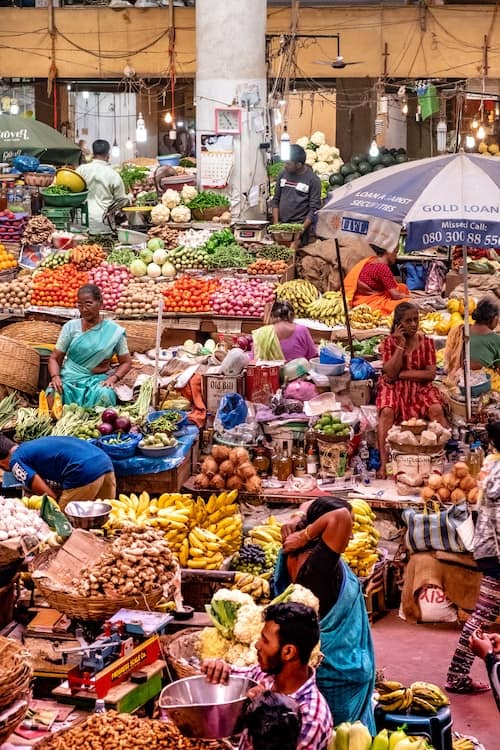
Everything in India is very Holy. Sometimes.
India loves a good paradox, and sadly many of these are all too ironic.
The healing mother of India – the Ganga (Ganges) – is mighty and powerful and commands the greatest respect in prayers and ceremonies around India, with hundreds of thousands coming to wash themselves of their sins in her waters each year. And then throw a plastic bottle in her. Or ten. Or worse.
Elephants are the earthly representation of the great Hindu God, Lord Ganesh – who represents prosperity, abundance and good health. Many elephants are kept at temples in India, and yet the conditions for many of them are brutal. Others are subjected to carrying hundreds of tourists every week with little rest.
India is full of contradictions. Just as you think you’ve worked something out, you’ll realise you got it all wrong.
There’s no real way of dealing with this. The best advice I can give is to try not to judge too much until you’ve seen more of India. And please don’t ride / bathe with elephants – go visit Wildlife SOS instead.
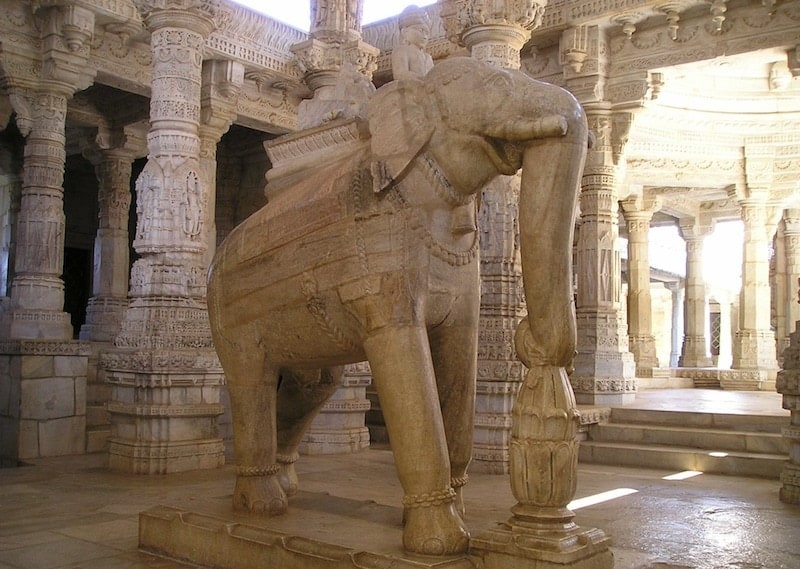
The Pollution
One of the hardest things to stomach in India is the extreme pollution and trash. Many of India’s beautiful landscapes are literally coated in plastic.
This is created by a mixture of poor education around environmental issues, and little to no interest from the Indian government in investing in proper waste, recycling and clean up initiatives for people. In many places in India people simply have no choice but to burn their trash. A recent proposed ban on several single-use plastic items was recently scrapped due to it being “commercially challenging”, but know that this is also caused by western countries shipping their “recycling” en masse to countries including India.
It can be easy to judge people throwing plastic from train windows. But the issue is more complicated: Education around protecting the environment has only just begun, and often places to dispose of waste properly are severely lacking.
Then there’s the matter of smog and poor air quality: This is real, and affects those who live on the streets in polluted cities such as Delhi, Agra, and Varanasi most of all.
What to do About Pollution in India
- Tweet Indian Tourism @incredibleindia and @PrakashJavdekar (Environment Minister) with pictures of pollution to drive the message home that tourists (or anyone else) don’t want to see trash. This helps push for more of a solution (India cares about tourist dollars).
- DO NOT add to the problem yourself. There’s no need to buy bottled water – here’s how to avoid it and drink safe water. Avoid single use plastic whenever you can, bring your own bamboo straws etc.
- Many places (hostels, hotels, beach clubs, yoga studios) organise clean-ups in India. If you see one, join it if you can.
- If you see people throwing garbage and you’re travelling with a local / guide, ask them to talk to the thrower about it and let them know it causes a problem. When we travel, Ravi does this kindly – the message is much better coming from a local person than a foreign tourist telling locals what to do.
- Consider buying a face mask if you plan to visit Delhi, Varanasi and Agra during winter.
READ MORE: 23 of our favourite Eco Lodges in India
Pin Me
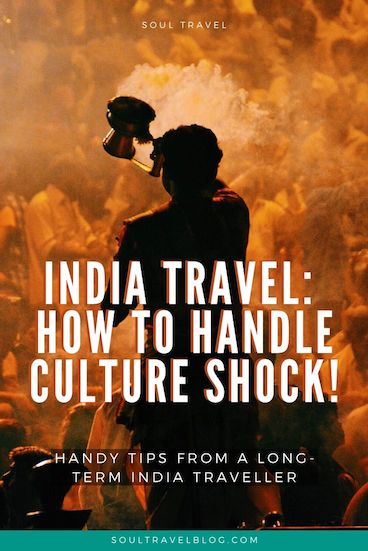
There’s (usually) no Such Thing as “Fixed Price”
In general, prices are usually negotiable in India. The main exceptions being entry tickets to museums / attractions and prices in shopping malls, in higher end shops and of course in restaurants.
Anything you buy in terms of souvenirs, in a market, and even for some services is negotiable. “Foreigner Tax” is a thing in India – that means that because you’re not from India you will be quoted a higher price, often 3 times the official price or higher. This is much worse in tourist hotspots.
Bargaining is essential!
How to Handle Bargaining in India:
- Bargaining is best approached with a sense of humour. Sellers want to make money and it’s important not to overpay to avoid subsequent tourists getting ripped off more, but equally don’t bust your gut over 1 or 2 rupees. Ask for a discount first. If a vendor asks you to name your price and you have no idea how much it should cost, don’t give him/her a price. Ask around for prices first or do some sneaky online research. If you have no clue, offer 25% of what they quoted.
- Walking away works a treat. Sometimes. If a price is too high, walk away. They may run after you with a better offer.
- Packaged products generally have an MRP on the back of them near the bar code (packaged food, drinks etc). DON’T pay more than the MRP. Once you know the MRP, just get out that money and hand it over without asking how much. A sneaky way to check the MRP is to ask to see the packet and pretend you’re looking at the ingredients.
- Check your change. The ticket office at the Delhi Red Fort tried to short change me and they’re not the only ones who’ll give this a try! (Luckily I caught him at it).
- Avoid buying souvenirs in super touristy places if you can. Eg buying things just outside the Taj Mahal? Not a good idea. Try to support artisans in smaller towns/villages.
- For good deals go shopping early in the morning. Vendors are often keen to make their first “lucky” deal of the day and more amenable to negotiation.
ⓘ TIP: Travel Insurance is a must for India – we use and recommend World Nomads – Get your quote here!
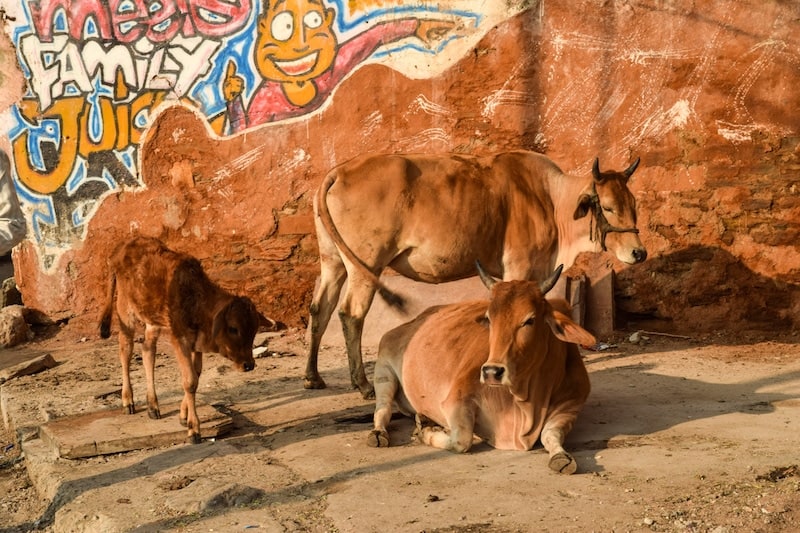
The Rules of the Road
The main rule of the road is: There is no rule! Or not to the untrained eye, anyway. Essentially (s)he with biggest horn / biggest vehicle, wins. If you’re walking, that’s definitely not you!
On Indian roads you’ll find trucks, busses, tuk-tuks, cycle rickshaws, road-side vendors, bicycles, motorcycles, cows, dogs, cars, people, and the occasional elephant or camel. Add to that, there are rarely any sidewalks/pavements that you can actually walk down in India – or the pavements are obstructed by vendors. Apart from the size rule, the cows generally win. No-one wants to kill the holy cow.
Because of this most people walk along the edges of the road. The best advice is to go with the flow. Don’t make any sudden movements, and follow the pace of the crowd. If you need to cross the road, holding out your hand facing down indicates you want to cross (forget about waiting for traffic lights), you’ll just need to wait until the traffic is slow enough to cross.
How to Deal with the Roads in India
- Do NOT drive in India. Unless you’re Indian that is.
- If you rent a scooter in Goa / elsewhere make sure you wear a helmet and the brakes work well before agreeing to take a bike.
- Avoid travel by road at night if you can, as road safety in India at night is not great.
- Follow the locals. If you’re not sure how to cross, stick with a local.
- Beeping / horns are used to let you know that a vehicle is there. Try not to let it phase you – it can be disconcerting at first hearing all the noise!
- Cows are generally docile but don’t try to pet them / stay out of their way – they have been known get a bit grumpy!
- Watch out for street dogs – we don’t advise petting them and many are scared of humans due to bad experiences. Rabies shots are strongly recommended for India.
- If you see sick street dogs (unfortunately there are many :-() which are in need of care, there are charities looking after street dogs who you can donate to.
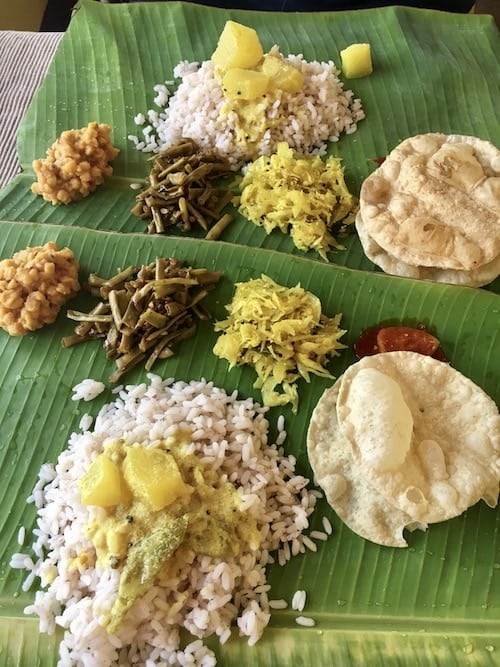
Food Comes First. (And is Best Enjoyed with Hands)
There’s no such thing as not being hungry in India. Just had lunch? Nonsense you still have room for those sweets, lassi or snack. Food is super important to Indians, and is not the done thing to refuse: Especially if you are offered food in someone’s home.
Indians believe that food is best eaten with hands as that way you are getting to experience food with all five senses. Hands are always cleaned meticulously before and after eating, and only eat with your dominant hand. Tip: It’s easier to eat with your hand using chapati (bread) if you feel like giving it a go! 🙂 If not, don’t worry, there are always spoons around.
Dealing with Everyone Trying to Sell you Something
Unfortunately there is the perception in India that all foreigners are super wealthy and have lots of money they are desperate to spend – this perception is strong in the most touristy places in India (Agra, Jaipur etc). This doesn’t come from an unkind place – many people are just trying to do business, but it can quickly get really annoying.
Generally when someone approaches you with services (transport, tours etc) they are trying to rip you off.
At monuments, museums, forts etc if someone starts following you and explaining things, they are hiring themselves as your guide and expecting to be paid at the end. Tell them clearly their services are not required pronto, or things are going to get awkward.
How to Deal with Touts
- When people approach you, just tell them clearly no. Once. If they persist, completely ignore them.
- Train stations are often swamped with touts – arrange advance pickups from hotels in Agra, Jaipur & Delhi to avoid a lot of hassle. Other less touristy places are easier.
- Tuktuks waiting outside luxury hotels and touristic places will often try to overcharge. Walk a couple of minutes to find a tuktuk (auto) who will use his meter, or book through the OLA app.
- Uber / OLA can be a godsend when you’re just fed up of haggling / dealing with drivers who don’t want to use their meter.
- At New Delhi Railway station, exit the Kashmiri Gate side not the Paharganj side for much less hassle!

Patriarchy & Gender Inequality in India
I’ve personally become frustrated with the patriarchy and disadvantage facing women in India. Although times are changing (and there are more options for women now in India than for many years), the old patriarchy is still alive and well. It is a much bigger problem for women living in India, but you may come across it as a traveller, too.
Men often talk over women, and if you’re a woman travelling with a man you can expect that your male counterpart will be the one spoken to by men, expected to have the money, etc. Gender roles are still clearly defined in much of India. I’ve become frustrated by taxi drivers who refuse to listen to my instructions and instead insist on calling the male receptionist at my hotel instead. Grr.
In some parts of rural India, notably Rajasthan and some other northern states, a practice known as “Purdah” is still in place. Traditionally this meant separation, where men and women lived separate lives, in different parts of the home, and women were not seen by the public.
Separate parts of the house may have gone (although some would argue that women are way too confined to the kitchen still), but some women still wear scarves over their head, and when guests come they will pull the veil over their face, too. I’m not passing judgement on this, but was surprised to see this practice on my first trip to India, having heard nothing about it beforehand.
Another thing you’ll notice is that far more men speak English than women do – especially outside of the upper, well educated classes in cities. It means that as a tourist, you’ll likely be speaking to men most of the time, and 99% of tour guides in India are male. A few companies are trying to address this imbalance in tourism, such as Open Eyes and Intrepid Travel.
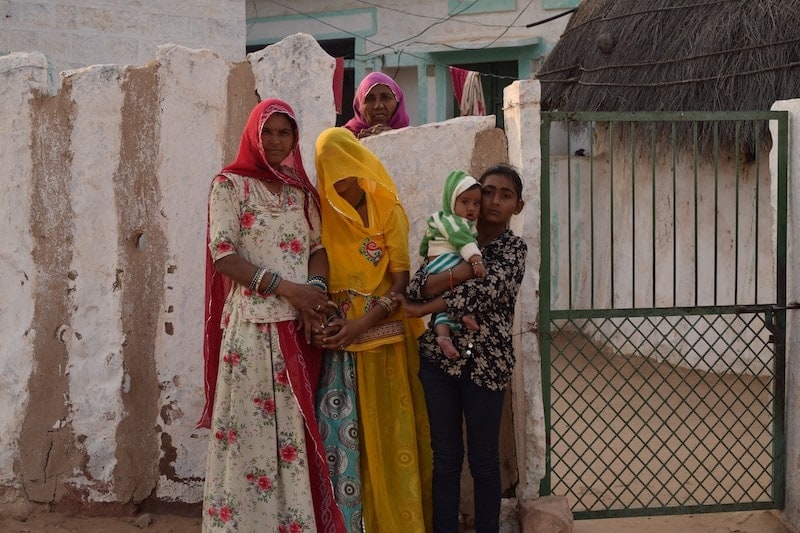
What you can do about Gender Inequality in India:
- If you’re female, talk to local women. They may want to talk to you, but feel shy. Learning a few words of Hindi helps, or ask a man to translate.
- Understand that different cultural roles exist. As a solo female traveller i’ve often been sent off to the kitchen to hang with the women. While I strongly object to this, it’s also an opportunity to bond with women and get to know more about the life of women in India.
- Ask for female tour guides. Demand helps generate supply, so eventually if we all ask for this, change and more opportunity may come.
- Support tourism companies promoting female empowerment such as Open Eyes and Intrepid Travel’s All Women India tour
Have you travelled to India? What tips would you give for handling culture shock in India? Let us know in the comments below.
Read more about Travel in India on Soul Travel India:
ⓘ TIP: Planning a trip to India? Join our free India Travel Facebook group here!
Pin this post on Pinterest!
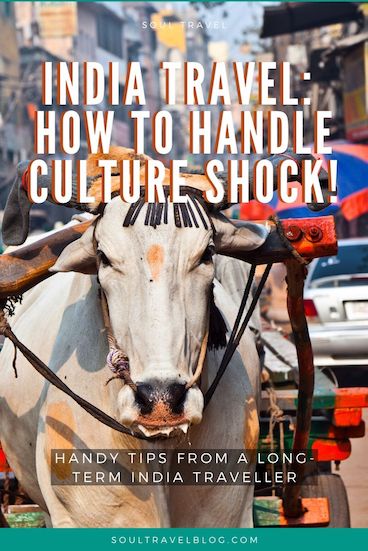
[activecampaign form=3]